The Secrets of William and Mary Part 4: The Underground Tunnels
February 11, 2010
Happy New Year!…oh wait, it’s February. Gosh, time runs by fast when you’re a college student, and if there’s one thing I don’t want to be thinking about right now, that would be graduation. (More specifically what to DO after graduation.)
So in our short little series of Secrets of William and Mary, we’ve gone ghost hunting, trailblazing and even a little sporting. But I haven’t really touched on some of the mischievous aspects of William and Mary and I thought I would start off with a topic many students often hear about, but few students ever see: the underground steam ventilation system.
Now, anyone reading my blog from outside of William and Mary probably just did a collective “huh?” But the legend of the Old Campus steam vents are something that most, if not all students are at some point exposed to.
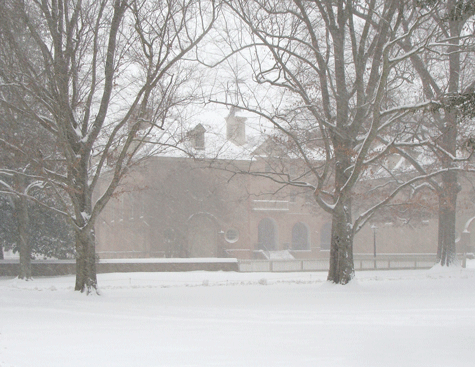
Underneath the Wren Chapel and Old Campus, are a series of underground tunnels that channel heat and telecommunications to nearby buildings.
Ever since the early 20th century, the College has always relied on steam to heat the buildings of Old Campus. From the Wren Building to McGlothlin-Street, underneath the historic brick pathways that our founders once walked on are a maze of tunnels that channel steam, internet and telephone lines to their respective buildings. On some cold days in the winter, steam can be seen pouring out from sewer manholes all along the area.
Now, for most College students, they would be content with that fact if it were not for the following passage in the student Code of Conduct:
“For reasons of safety and security, all roofs (except those with specifically approved sun decks or work-study areas), balconies, porches, window ledges, mechanical equipment areas, and steam tunnels of College buildings are closed to all but authorized employees.”
Legends and lore of William and Mary have each told several different stories as to just what the steam tunnels lead to or the punishment that could be incurred on the curious. Rumors include that one could be put in front of the Judicial Council, or worse, expelled instantly should one be found roaming the tunnels beneath the Sunken Gardens.
Which of course, have made students often wonder what exactly is in said “steam tunnel?”
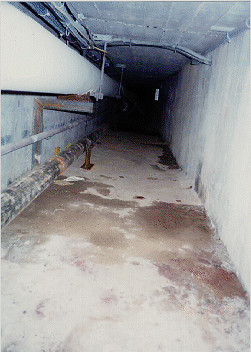
Princeton University's underground steam system, as taken by a tunneler in one of his journeys. The photo looks to be at several years old.
Perusing unofficial sources on the internet and the Swem Special Collections Wiki for the last couple months yields some interesting reports of an art called “tunneling.” Tunneling, on the college level, refers to the activity that started at the University of California-San Diego of exploring underground tunnels that may be hidden from the public. “Urban explorers” as one site calls themselves, argue that they quite simply yearn to make the thrill of discovery in an urban world where there aren’t many more frontiers to explore. One site even had a list of rumored underground tunnels such as UCLA’s underground “bridge” (a couple story tall underground chamber) and Stanford’s tunnels, which are supposedly made out of brick. Some sites even had pictures of tunneling expeditions by curious students at Princeton University who had wondered what exactly was down there.
At the College of William and Mary, as I soon found, tunneling has been more intriguing than most colleges and universities partly because of the College’s rich history and background. And not only students, but some professors in the very distant past have also been exploring these tunnels since the early 20th century.
Descriptions of the tunnels have been far ranging. Around the mid-1960s to the 1980s, reports online say that the tunnels were mainly dark, stuffy, wet passageways carrying steam in insulated tubes above your head that would leak at certain points. At many points, reports said that it would not be possible to walk through normally, and at some points, people would have to crawl down on all fours to get through. In recent times, in an effort to install improved internet communications and telephone lines on campus, it’s been said that the tunnels are much nicer with lighting and ventilation.
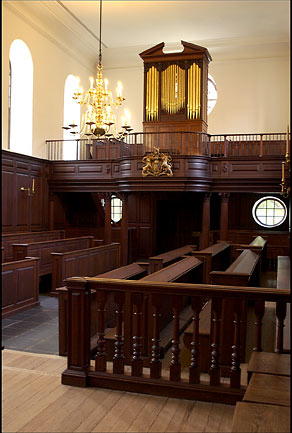
Below the Wren Chapel, lies the Crypt, the only entrance of which is through the underground steam tunnels. (Photo from College of William and Mary)
As for entrances into the tunnels, most sources have had a general consensus that the main entrance used to exist in the form of an unlocked door in the old ceramics studio located behind the current Admissions Building. As of the 1990s, one report said that this entrance, which all bloggers in the past say they used, had been barred from entry. Others have speculated that areas on campus in which steam originates, such as the basement of Barrett Hall, any pothole along Old Campus, the underground walkway across from Taliaferro Hall and the basement of Dupont Hall, among others, have been rumored to be entrances of some sort into the complex maze of tunnels underneath Old Campus.
Perhaps the most interesting factoid about the tunnels underneath Old Campus is that the underground tunnels are said to be the only method by which you can reach the Wren Crypt, or the “basement” of the Wren Building where they used to bury notable figures of colonial Williamsburg. The Crypt itself also holds an interesting secret having to do with Greek Life on campus. One passage from a blog post online talks of how more than 40-50 years ago,
fraternities on campus used to induct their pledges by making them travel through the steam tunnels and steal a bone off of one of the skeletons there. The post even mentioned the surprise on the author’s face when he walked into one student’s frat row room and found a genuine human skeleton in their room.
According to one forum post, in an attempt to verify the rumors, the Flat Hat, the student newspaper of the College,
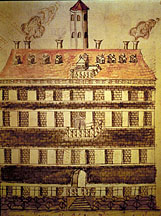
An early rendition of the Wren Building. (Photo from College of William and Mary)
in the 1970s attempted to explore the steam tunnels for themselves. The author claimed to be an illustrator brought along for the excursion into the underground since photographic technology at the time could not capture the darkness and humidity of the steam tunnel. The author apparently had a map of the tunnels under his possession, and found their way to the Crypt fairly easily. However, by his accounts, all of the slots in which skeletons should have been present were empty and furthermore, the entrance, allegedly, was locked with a steel reinforcement a couple weeks after the Flat Hat story published, making it practically impossible for anybody to enter the crypt from that time forward.
Later on, I tried to search for the Flat Hat article, but could not find any reference to the steam tunnels on the online database managed by Swem Library, nor could I find the article itself in any of the archives. Whether the article itself exists or not, is a mystery.
But one thing is for certain. The existence of the utilitarian tunnels and the tradition it adds to the history of the College is certainly not a mystery. And as long as they exist, they will always serve to pique the minds of William and Mary students for years to come.
Comments are currently closed. Comments are closed on all posts older than one year, and for those in our archive.


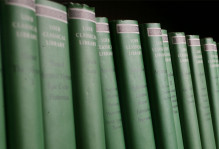

Great article, but I wish you would have explored the tunnels! I am class of 2007, and yes, I did go tunneling at William and Mary. Honestly, it was one of the best experiences of my college career, even though it really wasn’t a big deal. The thing was, it was so secretive and so forbidden, and not just a little scary. Well, once you got down there and started exploring it wasn’t so scary, but the anxiousness and apprehension beforehand made it feel like you were about to go on a real expedition. There’s not much to it down there – just a small, cramped maze of tunnels with no light and no ventilation. As you said, maybe that’s changed, but I did this back in 2005 or so, so I can’t imagine it’s that different. Anyway, thanks for the memories.
By the way, I entered without a hitch by a steam grate in the ground by Jefferson Hall.
There is a vault below Bruton Parish church which one part of the tunnel system leads. The contents of which are supposedly the rough draft of the Constitution and plays by Francis Bacon, along with something that if found would change American history forever and make what we know of it irrelevant.
I saw the crypt and steam tunnel entrance beneath the wren chapel myself. The basement is now equipped with electricity (and an alarm system). The tunnels have large pipes running through them. Recently, most unused tunnels have been filled in and the entrances sealed. There is no vault buried in the Bruton Parish Churchyard; the tunnels beneath William and Mary only lead from one building to another in the Historic Campus portion.